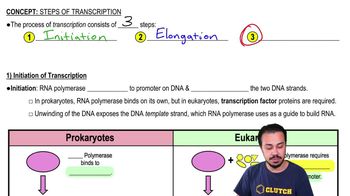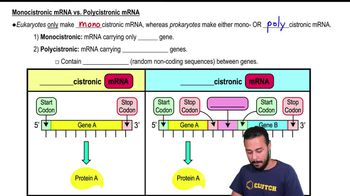Textbook Question
The following enzymes are used to make cDNA. What is the second enzyme used to make cDNA?
a. reverse transcriptase
b. ribozyme
c. RNA polymerase
d. DNA polymerase
125
views
 Verified step by step guidance
Verified step by step guidance



The following enzymes are used to make cDNA. What is the second enzyme used to make cDNA?
a. reverse transcriptase
b. ribozyme
c. RNA polymerase
d. DNA polymerase
DRAW IT Identify and mark each of the following in making cDNA: transcription, RNA processing, reverse transcription, DNA polymerase, cDNA.
<IMAGE>
If you put a gene in a virus, the next step in genetic modification would be
a. insertion of a plasmid.
b. transformation.
c. transduction.
d. PCR.
e. Southern blotting.
You are attempting to insert a gene for saltwater tolerance into a plant by using the Ti plasmid. In addition to the desired gene, you add a gene for tetracycline resistance (tet) to the plasmid. What is the purpose of the tet gene?
How does RNAi “silence” a gene?